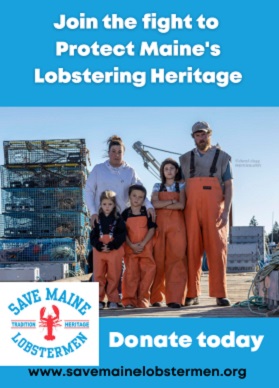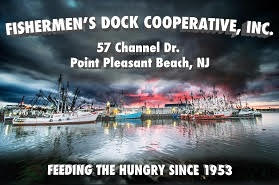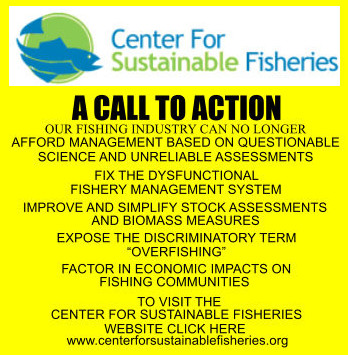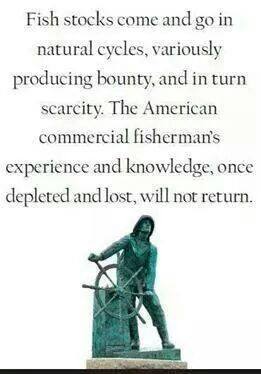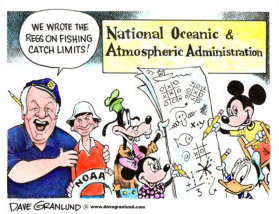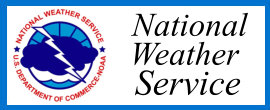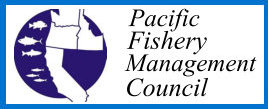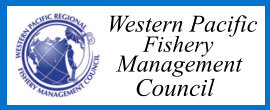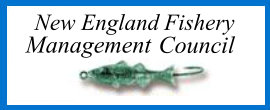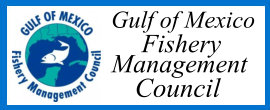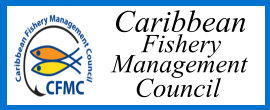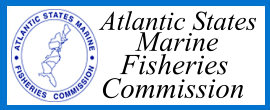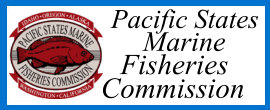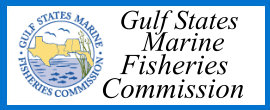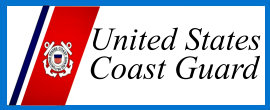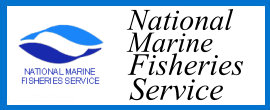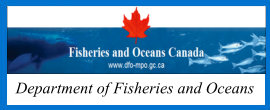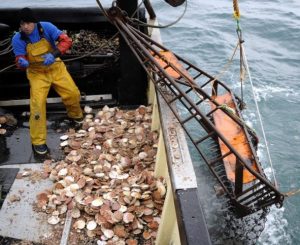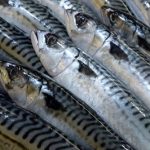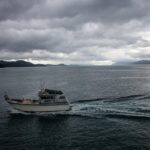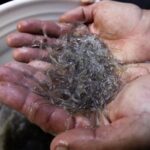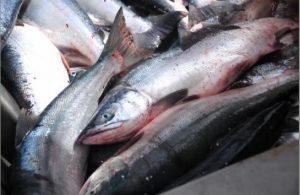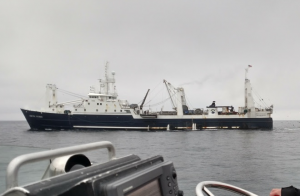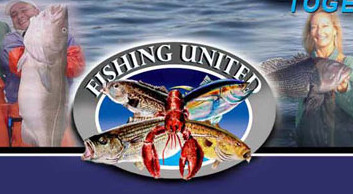Tag Archives: Nova Scotia
Elver prosecutions trickle into court after ‘hell’ year on N.S. and N.B. rivers
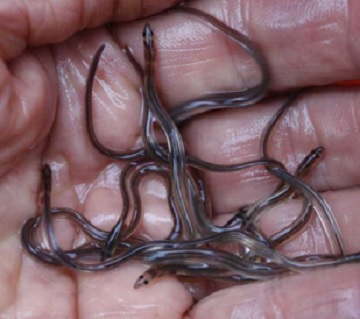 About three dozen people have been charged with offences related to this year’s chaotic illegal fishery for juvenile eels in the Maritimes, a number that falls well short of the overall tally of arrests this spring but which the federal Department of Fisheries and Oceans says could grow. The enforcement of the lucrative fishery for the tiny eels, also known as elvers, has been heavily scrutinized in recent years, with many in the industry outspoken about what they view as a failure to crack down on rampant poaching. The department said Friday that 37 people have been charged with elver-related fisheries offences committed in 2024, providing for the first time a concrete number of prosecutions that have emerged from a year when fisheries officers struggled badly to keep pace. more. >>CLICK TO READ<< 06: 45
About three dozen people have been charged with offences related to this year’s chaotic illegal fishery for juvenile eels in the Maritimes, a number that falls well short of the overall tally of arrests this spring but which the federal Department of Fisheries and Oceans says could grow. The enforcement of the lucrative fishery for the tiny eels, also known as elvers, has been heavily scrutinized in recent years, with many in the industry outspoken about what they view as a failure to crack down on rampant poaching. The department said Friday that 37 people have been charged with elver-related fisheries offences committed in 2024, providing for the first time a concrete number of prosecutions that have emerged from a year when fisheries officers struggled badly to keep pace. more. >>CLICK TO READ<< 06: 45
Nova Scotia against proposal to reallocate commercial elver quota
 “We just don’t agree,” Houston said about Ottawa’s proposal, which he called a shining example of the government’s “inability to properly understand and manage the fishery. It’s been communicated to them that we are not a fan of what they are trying to do there.” The elver fishery in the Maritimes has been tainted in recent years by drama and violence because of how profitable it is — the baby eels had reached market values as high as about $5,000 per kilogram in recent years. Under the proposed pilot allocation, the federal Fisheries Department is offering licences to 120 fishers currently employed by commercial licence holders, granting them 27 per cent of the overall quota. A further 1.5 per cent would be allocated to licences offered to 30 fishers who currently catch adult eels. more, >>CLICK TO READ<< 10:49
“We just don’t agree,” Houston said about Ottawa’s proposal, which he called a shining example of the government’s “inability to properly understand and manage the fishery. It’s been communicated to them that we are not a fan of what they are trying to do there.” The elver fishery in the Maritimes has been tainted in recent years by drama and violence because of how profitable it is — the baby eels had reached market values as high as about $5,000 per kilogram in recent years. Under the proposed pilot allocation, the federal Fisheries Department is offering licences to 120 fishers currently employed by commercial licence holders, granting them 27 per cent of the overall quota. A further 1.5 per cent would be allocated to licences offered to 30 fishers who currently catch adult eels. more, >>CLICK TO READ<< 10:49
Mik’maq elver fishers hope quotas create safety on N.S. rivers, but critics doubtful
 Indigenous elver fishers who once were at odds with federal fisheries officers say they’re hopeful that a new plan to provide them quotas this season will create more peace on the water. Earlier this month, a letter released by the federal Fisheries Department proposed a new quota system for the lucrative baby eel fishery that shifts 50 per cent of the total allowable catch of about 9,960 kilograms to First Nations fishers from commercial licence holders. Commercial elver fishers in the Maritimes have condemned the new system, saying it slashes their quotas without compensation, leaving little motivation for non-Indigenous companies to share their methods and facilities with the Indigenous entrants. more, >>CLICK TO READ<< 09:02
Indigenous elver fishers who once were at odds with federal fisheries officers say they’re hopeful that a new plan to provide them quotas this season will create more peace on the water. Earlier this month, a letter released by the federal Fisheries Department proposed a new quota system for the lucrative baby eel fishery that shifts 50 per cent of the total allowable catch of about 9,960 kilograms to First Nations fishers from commercial licence holders. Commercial elver fishers in the Maritimes have condemned the new system, saying it slashes their quotas without compensation, leaving little motivation for non-Indigenous companies to share their methods and facilities with the Indigenous entrants. more, >>CLICK TO READ<< 09:02
Fire destroys lobster boat in Canada Creek, N.S.
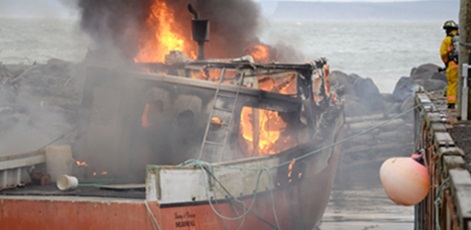 A fire on a lobster fishing boat in Canada Creek, N.S., took several hours to get under control, according to the local fire department. Kevin Ernest, spokesperson for the Waterville and District Fire Department, says emergency services were called to the wharf around 9:30 a.m. Thursday. By the time the fire department arrived, the boat was fully engulfed in flames. Ernest says it was a “stubborn fire” that was difficult to get out due to the amount of fuel on board. more, >>CLICK TO READ<< 15:56
A fire on a lobster fishing boat in Canada Creek, N.S., took several hours to get under control, according to the local fire department. Kevin Ernest, spokesperson for the Waterville and District Fire Department, says emergency services were called to the wharf around 9:30 a.m. Thursday. By the time the fire department arrived, the boat was fully engulfed in flames. Ernest says it was a “stubborn fire” that was difficult to get out due to the amount of fuel on board. more, >>CLICK TO READ<< 15:56
Sipekne’katik claims ‘significant progress’ in talks with Ottawa over controversial N.S. lobster fishery
 The First Nation at the centre of a highly contentious out-of-season lobster fishery in southwest Nova Scotia says mediation with the federal government is bearing fruit, with lengthy meetings between both sides leading to the first “meaningful dialogue” in 25 years. The comments from the lawyer for Sipekne’katik First Nation come in a letter to a Nova Scotia Supreme Court judge that asks that litigation launched by the band against the federal government in 2021 be paused for another six months to allow negotiations to continue. The two sides, along with intervenor Unified Fisheries Conservation Alliance, which represents commercial fishing interests, are expected to discuss the time extension in court this morning. more, >>CLICK TO READ<< 08:02
The First Nation at the centre of a highly contentious out-of-season lobster fishery in southwest Nova Scotia says mediation with the federal government is bearing fruit, with lengthy meetings between both sides leading to the first “meaningful dialogue” in 25 years. The comments from the lawyer for Sipekne’katik First Nation come in a letter to a Nova Scotia Supreme Court judge that asks that litigation launched by the band against the federal government in 2021 be paused for another six months to allow negotiations to continue. The two sides, along with intervenor Unified Fisheries Conservation Alliance, which represents commercial fishing interests, are expected to discuss the time extension in court this morning. more, >>CLICK TO READ<< 08:02
DFO to increase year-round lobster gear monitoring in Bay of Fundy
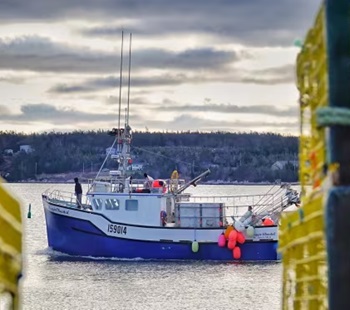 Enforcement officers with the federal Department of Fisheries and Oceans will soon have a new tool to lift, check and seize illegal lobster fishing gear from the waters between Nova Scotia and New Brunswick. The department is seeking a crew and vessel that would be contracted to take DFO officers on patrols to inspect fishing equipment. The patrol work isn’t new, but this contract represents an increase in surveillance and enforcement in an area where the fishing industry has called on officers to do more to deter illegal fishing operations. The contracted vessel would be responsible for patrolling throughout the Bay of Fundy and “be able to berth at various ports in New Brunswick and Nova Scotia,” according to the documents published online. more, >>CLICK TO READ<< 07:33
Enforcement officers with the federal Department of Fisheries and Oceans will soon have a new tool to lift, check and seize illegal lobster fishing gear from the waters between Nova Scotia and New Brunswick. The department is seeking a crew and vessel that would be contracted to take DFO officers on patrols to inspect fishing equipment. The patrol work isn’t new, but this contract represents an increase in surveillance and enforcement in an area where the fishing industry has called on officers to do more to deter illegal fishing operations. The contracted vessel would be responsible for patrolling throughout the Bay of Fundy and “be able to berth at various ports in New Brunswick and Nova Scotia,” according to the documents published online. more, >>CLICK TO READ<< 07:33
In once tranquil N.S. town, intimidation in the lobster industry now all too common
 Standing by a bullet hole in his dining room wall, lobster buyer Geoffrey Jobert says such attacks have become an all-too-familiar reality in Nova Scotia’s largest fishery. The 30-year-old and his younger brother came to the area from Halifax to take over his father’s processing plant five years ago and now employ 100 people. He’s enjoyed making friends in the francophone town and paddling along a stunning beach near his home when he has a few spare hours. But last year, threats started after he agreed to buy the catch of a licensed, commercial harvester who was no longer willing to provide his catch to facilities allegedly purchasing illegally caught lobster. And Jobert soon learned he wasn’t the only person in the communities along the Acadian shore who experienced late-night attacks. more, >>CLICK TO READ<< 06:35
Standing by a bullet hole in his dining room wall, lobster buyer Geoffrey Jobert says such attacks have become an all-too-familiar reality in Nova Scotia’s largest fishery. The 30-year-old and his younger brother came to the area from Halifax to take over his father’s processing plant five years ago and now employ 100 people. He’s enjoyed making friends in the francophone town and paddling along a stunning beach near his home when he has a few spare hours. But last year, threats started after he agreed to buy the catch of a licensed, commercial harvester who was no longer willing to provide his catch to facilities allegedly purchasing illegally caught lobster. And Jobert soon learned he wasn’t the only person in the communities along the Acadian shore who experienced late-night attacks. more, >>CLICK TO READ<< 06:35
DFO poised to shake up fishery for tiny eels in ‘devastating’ blow to licence holders
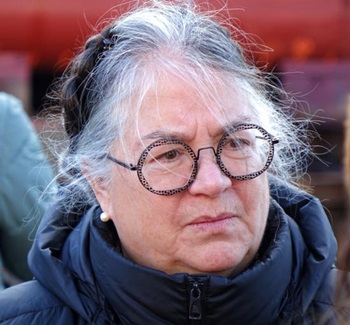 The federal Department of Fisheries and Oceans is poised to impose a major shakeup on the lucrative but problem-plagued Maritime fishery for juvenile eels, stripping most commercial operations of nearly all their quota and handing it to individual fishermen and First Nations. In a letter Thursday, the department proposes that six licence holders, many of which pioneered the industry and slogged through years of low prices before the recent boom, will lose 80 to 90 per cent of the quota they fished before 2022. The remaining three will see cuts of about 60 per cent. “The minister and DFO has taken this fishery, which has provided great-paying jobs and community support for decades, and they’ve basically destroyed it,” said Stanley King, whose company Atlantic Elver Fishery Ltd. will lose 81 per cent of its quota. more, >>CLICK TO READ<< 17:57
The federal Department of Fisheries and Oceans is poised to impose a major shakeup on the lucrative but problem-plagued Maritime fishery for juvenile eels, stripping most commercial operations of nearly all their quota and handing it to individual fishermen and First Nations. In a letter Thursday, the department proposes that six licence holders, many of which pioneered the industry and slogged through years of low prices before the recent boom, will lose 80 to 90 per cent of the quota they fished before 2022. The remaining three will see cuts of about 60 per cent. “The minister and DFO has taken this fishery, which has provided great-paying jobs and community support for decades, and they’ve basically destroyed it,” said Stanley King, whose company Atlantic Elver Fishery Ltd. will lose 81 per cent of its quota. more, >>CLICK TO READ<< 17:57
Crabby start to southwestern N.S. lobster season
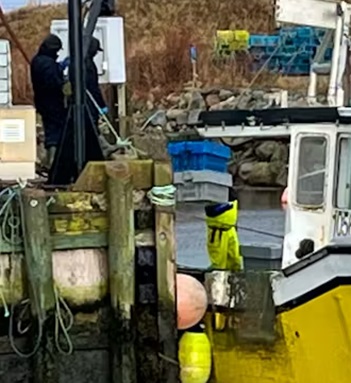 Jonah crabs instead of lobster have been filling traps set by many southwestern Nova Scotia lobster fishermen fishing in lobster fishing area 34 the first week of the season. “Across the board, we’re hearing a massive biomass of female Jonah crab right now is loading up a lot of the traps, which is a pain for the crew,” says Heather Mulock, executive director of the Coldwater Lobster Association. “It’s always discouraging to see traps full of something you don’t want. One of the biggest concerns this year is the amount of crab.” Mulock said it’s not unusual for crews to have some crabs in their traps, but this year is different. “I’ve talked with enough fishermen, some who have been fishing 30 or 40 years, and they have never seen this much crab in their entire fishing career, so things are changing. Hopefully, this is another anomaly for LFA 34,” she said. more, >>CLICK TO READ<< 11:31
Jonah crabs instead of lobster have been filling traps set by many southwestern Nova Scotia lobster fishermen fishing in lobster fishing area 34 the first week of the season. “Across the board, we’re hearing a massive biomass of female Jonah crab right now is loading up a lot of the traps, which is a pain for the crew,” says Heather Mulock, executive director of the Coldwater Lobster Association. “It’s always discouraging to see traps full of something you don’t want. One of the biggest concerns this year is the amount of crab.” Mulock said it’s not unusual for crews to have some crabs in their traps, but this year is different. “I’ve talked with enough fishermen, some who have been fishing 30 or 40 years, and they have never seen this much crab in their entire fishing career, so things are changing. Hopefully, this is another anomaly for LFA 34,” she said. more, >>CLICK TO READ<< 11:31
A lobster season Q&A: Supply and demand, price volatility and challenges in markets
 It’s never smooth sailing for the Atlantic Canada lobster industry. Each year there are issues and challenges to contend with. The weather and catches are beyond anyone’s control. But the one constant is how important this industry is economically to the region, and to the communities that rely on it. Tasked with such things as marketing and advocacy of the industry is the Lobster Council of Canada. In this Q&A, the council’s executive director, Geoff Irvine, talks about the industry, the upcoming lobster season in southwestern Nova Scotia, and the challenges that continue to stack up on the menu. Q: How does the fall opening of the LFA 33 and 34 districts look in comparison to previous seasons? more, >>CLICK TO READ<< 08:28
It’s never smooth sailing for the Atlantic Canada lobster industry. Each year there are issues and challenges to contend with. The weather and catches are beyond anyone’s control. But the one constant is how important this industry is economically to the region, and to the communities that rely on it. Tasked with such things as marketing and advocacy of the industry is the Lobster Council of Canada. In this Q&A, the council’s executive director, Geoff Irvine, talks about the industry, the upcoming lobster season in southwestern Nova Scotia, and the challenges that continue to stack up on the menu. Q: How does the fall opening of the LFA 33 and 34 districts look in comparison to previous seasons? more, >>CLICK TO READ<< 08:28
Continuation of lobster quality and moult survey very important to southwestern NS industry
 Every fall since 2005, in advance of the commercial lobster fishery opening in Lobster Fishing Areas (LFA) 33 and 34, a scientific survey has been conducted in the waters around southwestern Nova Scotia. “The overall objective of the Atlantic Lobster Moult and Quality (ALMQ) Survey is to develop an ongoing monitoring program, based on biological indicators of moult-timing, quality and environmental conditions, to predict the quality of lobsters at the start of the lobster seasons in LFAs 33 and 34,” says Heather Mulock, executive director of the Coldwater Lobster Association. “The data collected is used to establish a framework for adaptation decision-making for the lobster sector, including ensuring better product marketability, live storage, and international shipping valuation.” more, >>CLICK TO READ<< 07:10
Every fall since 2005, in advance of the commercial lobster fishery opening in Lobster Fishing Areas (LFA) 33 and 34, a scientific survey has been conducted in the waters around southwestern Nova Scotia. “The overall objective of the Atlantic Lobster Moult and Quality (ALMQ) Survey is to develop an ongoing monitoring program, based on biological indicators of moult-timing, quality and environmental conditions, to predict the quality of lobsters at the start of the lobster seasons in LFAs 33 and 34,” says Heather Mulock, executive director of the Coldwater Lobster Association. “The data collected is used to establish a framework for adaptation decision-making for the lobster sector, including ensuring better product marketability, live storage, and international shipping valuation.” more, >>CLICK TO READ<< 07:10
And they’re off! The 2024-25 lobster season in southwestern Nova Scotia opens with Dumping Day
 Following a one-day weather delay, the six-month commercial lobster fishery in southwestern Nova Scotia and along the province’s south shore opened on the morning of Nov. 26 with light winds to send off the crews. Referred to as Dumping Day, here are some photos from parts of Yarmouth County as boats left their wharfs and harbours in LFA 34 to head to the fishing grounds. The season started at 5 a.m., which is an hour earlier than normal, to capitalize on the lighter winds. Lots of photos, more, >>CLICK TO READ<< 08:06
Following a one-day weather delay, the six-month commercial lobster fishery in southwestern Nova Scotia and along the province’s south shore opened on the morning of Nov. 26 with light winds to send off the crews. Referred to as Dumping Day, here are some photos from parts of Yarmouth County as boats left their wharfs and harbours in LFA 34 to head to the fishing grounds. The season started at 5 a.m., which is an hour earlier than normal, to capitalize on the lighter winds. Lots of photos, more, >>CLICK TO READ<< 08:06
Dumping day begins in southwestern Nova Scotia with calm conditions
 Dumping day began with much fanfare in southwestern Nova Scotia early Tuesday morning. Fireworks signaled the start of the commercial lobster season in Sambro, with loved ones waving goodbye from the wharf where crowds gathered to see the fishers off. “It’s an exciting morning, we always all come down and watch the fireworks, as they go out, it’s a pretty big day for everybody,” said Briana Beaver, whose partner is a fisher. Dumping day for lobster fishing areas 33 and 34 is typically the final Monday of November, but there was a one-day delay this year due to rough weather. While conditions were calm Tuesday, boats that work in LFA 34, which extends from Shelburne County around the southwest coast of the province, were allowed to leave a bit earlier at 5 a.m. Photos, Video, more, >>CLICK TO READ<< 10:30
Dumping day began with much fanfare in southwestern Nova Scotia early Tuesday morning. Fireworks signaled the start of the commercial lobster season in Sambro, with loved ones waving goodbye from the wharf where crowds gathered to see the fishers off. “It’s an exciting morning, we always all come down and watch the fireworks, as they go out, it’s a pretty big day for everybody,” said Briana Beaver, whose partner is a fisher. Dumping day for lobster fishing areas 33 and 34 is typically the final Monday of November, but there was a one-day delay this year due to rough weather. While conditions were calm Tuesday, boats that work in LFA 34, which extends from Shelburne County around the southwest coast of the province, were allowed to leave a bit earlier at 5 a.m. Photos, Video, more, >>CLICK TO READ<< 10:30

Shot fired into lobster buyer’s home as southwest N.S. season opens
Commercial fishermen set to start the lucrative lobster fishery in southwest Nova Scotia on Tuesday morning are boycotting buyers alleged to be profiteering off the unlicensed summer fishery in St. Mary’s Bay. On Saturday night, one of the buyers those fishermen in lobster fishing areas 33 and 34 have turned to have a shot fired through his home. On Sunday morning, Geoffrey Jobert, owner of Lobster Hub Inc. in Meteghan, went downstairs in his Clare County home and found a series of holes passing through his garage door, kitchen, dining room and living room. He found a round lodged in his hardwood rocking chair. “It was stormy the night before and we didn’t hear the shot,” said Jobert. On the road outside, he said, he found a spent shell casing. While there was no message left, Jobert said he knows why he’s being threatened. more, >>CLICK TO READ<< 07:18
Nova Scotia Lobster Season Faces Wind Delays Again
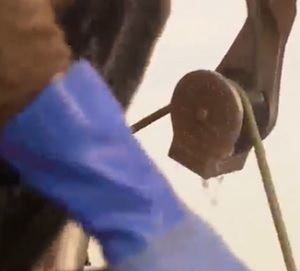 Weather conditions push back the much-anticipated opening day for the region’s commercial lobster fishery Strong winds have once again delayed the opening of the commercial lobster season along the south shore of Nova Scotia. Scheduled to commence on Monday, November 25, the season’s launch has been postponed due to weather conditions not cooperating with the fishermen’s plans. The forecast continues to show gale force winds, prompting industry officials to eye Tuesday, November 26, as the likely new opening day. This pattern of weather-related delays is nothing new for lobster fishers who have seen the impact of harsh conditions on their opening days for years. The season is set by regulation to start on the last Monday of November, but as was the case this year, it frequently doesn’t go according to plan. more, >>CLICK TO READ<< 06:56
Weather conditions push back the much-anticipated opening day for the region’s commercial lobster fishery Strong winds have once again delayed the opening of the commercial lobster season along the south shore of Nova Scotia. Scheduled to commence on Monday, November 25, the season’s launch has been postponed due to weather conditions not cooperating with the fishermen’s plans. The forecast continues to show gale force winds, prompting industry officials to eye Tuesday, November 26, as the likely new opening day. This pattern of weather-related delays is nothing new for lobster fishers who have seen the impact of harsh conditions on their opening days for years. The season is set by regulation to start on the last Monday of November, but as was the case this year, it frequently doesn’t go according to plan. more, >>CLICK TO READ<< 06:56
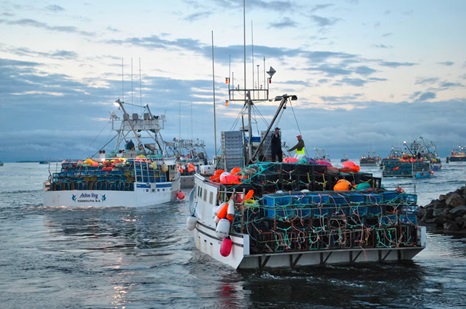
Past lobster season opener hits and misses in southwestern Nova Scotia
The majority of time if the scheduled opening day of the lobster season in southwestern Nova Scotia doesn’t go according to plan, it’s because the weather and safety concerns have forced a postponement. The lobster season is always slated to open the last Monday of November. Strong winds are preventing that once again from happening on Monday, Nov. 25 for the start of the 2024-25 season. Tuesday, Nov. 26, has been identified as the more favourable option with industry weather calls happening the morning of Monday, Nov. 25 in LFAs 34 and 33 to confirm the season opening. While weather is always the culprit for a season opening delay, through time there have been other issues that have also had impacts on season starts. Here’s a look back at past season openers. Photos, more, >>CLICK TO READ<< 12:57
Solar energy and more: Seeking to improve energy efficiency, sustainability in the fishing fleet
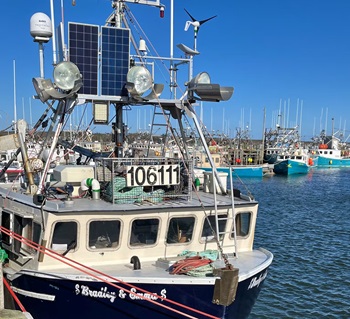 Through two provincially funded programs, Nova Scotia’s fishing fleet is becoming more energy efficient and sustainable. The Fisheries and Aquaculture Energy Efficiency Innovation Fund (FAEEIF) offers $6.5 million over three years in incentives to help prepare the commercial fisheries and aquaculture sectors in Nova Scotia to reduce their energy use and mitigate climate change impacts. The Nova Scotia Seafood Innovation and Technology Adoption Program (NS-ITAP) provides non-repayable financial assistance to Nova Scotia commercial entities in the fishing, aquaculture, marine plant harvesting, and seafood buying and processing sector to increase productivity, competitiveness, quality and sustainability. The Brazil Rock 33 34 Lobster Association has been busy helping its members fill out applications for the two programs. “We’re going for a second run,” says Dan Fleck, executive director of the association. The off-grid energy systems keep the vessel’s batteries charged, the bilge pumps working, and a heater running when it is berthed at its home port without running the main engine or connecting to shore power. more, >>CLICK TO READ<< 17:37
Through two provincially funded programs, Nova Scotia’s fishing fleet is becoming more energy efficient and sustainable. The Fisheries and Aquaculture Energy Efficiency Innovation Fund (FAEEIF) offers $6.5 million over three years in incentives to help prepare the commercial fisheries and aquaculture sectors in Nova Scotia to reduce their energy use and mitigate climate change impacts. The Nova Scotia Seafood Innovation and Technology Adoption Program (NS-ITAP) provides non-repayable financial assistance to Nova Scotia commercial entities in the fishing, aquaculture, marine plant harvesting, and seafood buying and processing sector to increase productivity, competitiveness, quality and sustainability. The Brazil Rock 33 34 Lobster Association has been busy helping its members fill out applications for the two programs. “We’re going for a second run,” says Dan Fleck, executive director of the association. The off-grid energy systems keep the vessel’s batteries charged, the bilge pumps working, and a heater running when it is berthed at its home port without running the main engine or connecting to shore power. more, >>CLICK TO READ<< 17:37
Nova Scotia: Safety Top Priority as Lobster Season Begins
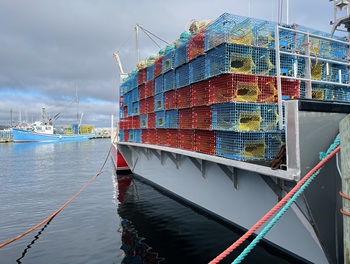 With the lobster season about to start, fishing crews in southwestern Nova Scotia are reminded to make safety a top priority. Dumping Day, as the first day of the season is known, will see thousands of lobster traps dumped along the south and western shores in lobster fishing areas 33 and 34. The start in both areas is weather dependent but is expected to be Monday, November 25. The Province urges fishers to take the time and necessary steps to stay safe. Fishing crews preparing to head out each day should: monitor the weather, assess their boats, check all vessel safety equipment to ensure it is inspected and accessible, prepare for emergencies. Occupational health and safety laws require all crew members to wear a life jacket or other personal flotation device. Links, more, >>CLICK TO READ<< 15:06
With the lobster season about to start, fishing crews in southwestern Nova Scotia are reminded to make safety a top priority. Dumping Day, as the first day of the season is known, will see thousands of lobster traps dumped along the south and western shores in lobster fishing areas 33 and 34. The start in both areas is weather dependent but is expected to be Monday, November 25. The Province urges fishers to take the time and necessary steps to stay safe. Fishing crews preparing to head out each day should: monitor the weather, assess their boats, check all vessel safety equipment to ensure it is inspected and accessible, prepare for emergencies. Occupational health and safety laws require all crew members to wear a life jacket or other personal flotation device. Links, more, >>CLICK TO READ<< 15:06
Dumping Day won’t be Monday in LFA 33/34
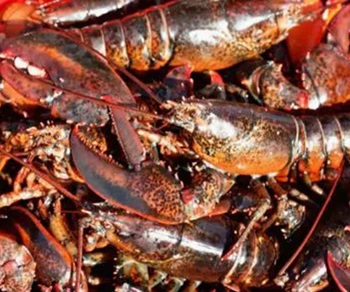 Dumping Day is delayed once again. It’s the day that hundreds of lobster fishing vessels head out to set their traps, marking the start of the commercial lobster fishery. Port representatives from Lobster Fishing Area 34, which includes Digby around Yarmouth to Shelburne County, and the Department of Fisheries and Oceans held a weather call Saturday morning to look at a potential opening for Monday. Due to high winds, the decision was a ‘no go’. more, >>CLICK TO READ<<08:46
Dumping Day is delayed once again. It’s the day that hundreds of lobster fishing vessels head out to set their traps, marking the start of the commercial lobster fishery. Port representatives from Lobster Fishing Area 34, which includes Digby around Yarmouth to Shelburne County, and the Department of Fisheries and Oceans held a weather call Saturday morning to look at a potential opening for Monday. Due to high winds, the decision was a ‘no go’. more, >>CLICK TO READ<<08:46
TSB says harsh weather, lack of contingency plan contributed to fatal vessel sinking
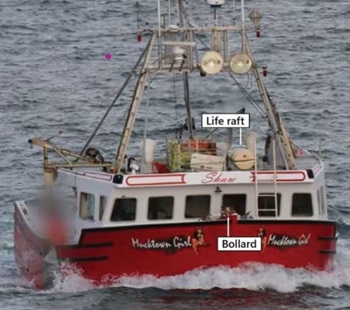 A fatal fishing vessel incident near Canso, N.S., in 2022 was caused in part by severe weather conditions and a lack of contingency planning for towing disabled vessels, according to the Transportation Safety Board of Canada. The board on Thursday released its investigative report into the rescue operation of the F/V Mucktown Girl, which resulted in the death of one of the halibut boat’s crew members and injuries to two Canadian Coast Guard crew. The Mucktown Girl, a 15-metre vessel with five people on board, was around 160 kilometres southeast of Canso when it experienced electrical problems and lost power late in the night on March 11, 2022. The crew contacted the Joint Rescue Coordination Centre in Halifax and the coast guard ship Jean Goodwill arrived the next morning. more, >>CLICK TO READ<< 08:08
A fatal fishing vessel incident near Canso, N.S., in 2022 was caused in part by severe weather conditions and a lack of contingency planning for towing disabled vessels, according to the Transportation Safety Board of Canada. The board on Thursday released its investigative report into the rescue operation of the F/V Mucktown Girl, which resulted in the death of one of the halibut boat’s crew members and injuries to two Canadian Coast Guard crew. The Mucktown Girl, a 15-metre vessel with five people on board, was around 160 kilometres southeast of Canso when it experienced electrical problems and lost power late in the night on March 11, 2022. The crew contacted the Joint Rescue Coordination Centre in Halifax and the coast guard ship Jean Goodwill arrived the next morning. more, >>CLICK TO READ<< 08:08
Safety board calls for changes two years after Nova Scotia fisherman’s death at sea
 An investigation into how the Canadian Coast Guard responded to a Nova Scotia vessel in distress two years ago raises questions about why one fisherman died after a towing operation went awry. In an investigation report released Thursday, the Transportation Safety Board says the fishing boat F/V Mucktown Girl was returning to Canso, N.S., with five crew aboard on March 11, 2022, when it was disabled by electrical problems. The captain called for a tow from the coast guard as a storm was closing in. After a seven-hour voyage, the Canadian Coast Guard Ship Jean Goodwill reached the drifting boat and attached a 300-metre tow line to the smaller vessel’s bollard. But as the weather turned rough, the bollard broke off six hours into the recovery mission. At that point, the decision was made to let the fishing crew ride out the storm aboard the F/V Mucktown Girl rather than attach another tow line that could damage the boat. more, >>CLICK TO READ<< 19:40
An investigation into how the Canadian Coast Guard responded to a Nova Scotia vessel in distress two years ago raises questions about why one fisherman died after a towing operation went awry. In an investigation report released Thursday, the Transportation Safety Board says the fishing boat F/V Mucktown Girl was returning to Canso, N.S., with five crew aboard on March 11, 2022, when it was disabled by electrical problems. The captain called for a tow from the coast guard as a storm was closing in. After a seven-hour voyage, the Canadian Coast Guard Ship Jean Goodwill reached the drifting boat and attached a 300-metre tow line to the smaller vessel’s bollard. But as the weather turned rough, the bollard broke off six hours into the recovery mission. At that point, the decision was made to let the fishing crew ride out the storm aboard the F/V Mucktown Girl rather than attach another tow line that could damage the boat. more, >>CLICK TO READ<< 19:40
‘Dumping Day’ for southwest N.S. lobster season fast approaching
 Lobster fishers in southwestern Nova Scotia are ‘gearing’ up their boats. Dumping Day for fishing areas 33 and 34, which stretches from Digby around to Halifax is scheduled for Monday. Dan Fleck with the Brazil Rock 33/34 Lobster Association says weather calls with port reps and DFO begin this Friday. “Any winds greater than 26 knots in any direction within the area, DFO will implement a closure for the day. It’s also possible port reps can open or close it, depending on what is safest for all, as safety is most important,” said Fleck. more, >>CLICK TO READ<< 09:04
Lobster fishers in southwestern Nova Scotia are ‘gearing’ up their boats. Dumping Day for fishing areas 33 and 34, which stretches from Digby around to Halifax is scheduled for Monday. Dan Fleck with the Brazil Rock 33/34 Lobster Association says weather calls with port reps and DFO begin this Friday. “Any winds greater than 26 knots in any direction within the area, DFO will implement a closure for the day. It’s also possible port reps can open or close it, depending on what is safest for all, as safety is most important,” said Fleck. more, >>CLICK TO READ<< 09:04
Suggested areas for offshore wind around N.S. swell in size
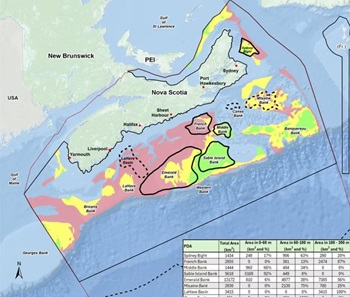 Offshore areas around Nova Scotia recommended for wind energy projects have ballooned in size in the latest version of a report for government, troubling some in the fishing industry who are bracing for disruptions. The draft final report comes from the regional assessment committee, which was tasked by the province and Ottawa two years ago to investigate the potential impacts of offshore wind development on Nova Scotia. It describes eight potential development areas that cover a total of 31,200 square kilometres. The areas stretch from the tip of George’s Bank southwest of Nova Scotia, up the Atlantic coastline and around Cape Breton Island. more, >>CLICK TO READ<< 08:14
Offshore areas around Nova Scotia recommended for wind energy projects have ballooned in size in the latest version of a report for government, troubling some in the fishing industry who are bracing for disruptions. The draft final report comes from the regional assessment committee, which was tasked by the province and Ottawa two years ago to investigate the potential impacts of offshore wind development on Nova Scotia. It describes eight potential development areas that cover a total of 31,200 square kilometres. The areas stretch from the tip of George’s Bank southwest of Nova Scotia, up the Atlantic coastline and around Cape Breton Island. more, >>CLICK TO READ<< 08:14
Court won’t overturn decision to cut quota from N.S., N.B. elver licence holders
 Three judges have delivered another blow to beleaguered commercial groups that fish for lucrative juvenile eels in the Maritimes, agreeing with a lower court ruling that upheld Ottawa’s 2022 decision to transfer a portion of their quota to First Nations without compensation. The Federal Court of Appeal heard arguments in the case last week in Halifax, and emerged with a decision that found the federal fisheries minister had “broad discretion” and had used it reasonably. Tien Nguyen, a pioneer in Canada’s fishery for young eels, also known as elvers, said he had hoped the judges would address the “absolute power” of the fisheries minister to make decisions that have enormous financial impact on licence holders. “It’s just like you build up the business, you struggle with it for a number of years, and when it’s finally successful, the government decided to take it away from you,” more, >>CLICK TO READ<< 15:40
Three judges have delivered another blow to beleaguered commercial groups that fish for lucrative juvenile eels in the Maritimes, agreeing with a lower court ruling that upheld Ottawa’s 2022 decision to transfer a portion of their quota to First Nations without compensation. The Federal Court of Appeal heard arguments in the case last week in Halifax, and emerged with a decision that found the federal fisheries minister had “broad discretion” and had used it reasonably. Tien Nguyen, a pioneer in Canada’s fishery for young eels, also known as elvers, said he had hoped the judges would address the “absolute power” of the fisheries minister to make decisions that have enormous financial impact on licence holders. “It’s just like you build up the business, you struggle with it for a number of years, and when it’s finally successful, the government decided to take it away from you,” more, >>CLICK TO READ<< 15:40
N.S. communities light up Christmas trees made of lobster traps
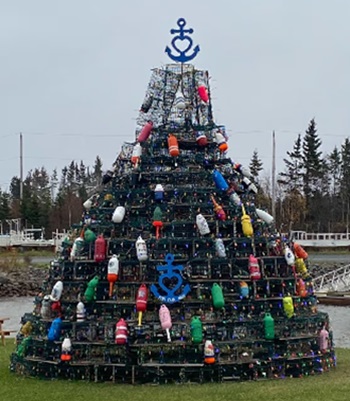 A uniquely Maritime holiday tradition is back across the region. Christmas trees made out of lobster traps have begun to pop up again across Nova Scotia. The first tree of this kind appears to have been built in Gloucester, Mass., in the early 2000s. In Nova Scotia, one of the first trap trees created was in Barrington in 2009. Since then, other communities have started to put up their own trees. Catherine Falconer of Toney River in Pictou County said she began putting up lobster tree traps in that community to mark a year after her son, Nick, died in November 2019 at the age of 24. more, >>CLICK TO READ<< 06:42
A uniquely Maritime holiday tradition is back across the region. Christmas trees made out of lobster traps have begun to pop up again across Nova Scotia. The first tree of this kind appears to have been built in Gloucester, Mass., in the early 2000s. In Nova Scotia, one of the first trap trees created was in Barrington in 2009. Since then, other communities have started to put up their own trees. Catherine Falconer of Toney River in Pictou County said she began putting up lobster tree traps in that community to mark a year after her son, Nick, died in November 2019 at the age of 24. more, >>CLICK TO READ<< 06:42
Lack of fishing prohibitions in ‘grey zone’ could pose risk for right whales, expert says
 One marine conservation expert has questions about the efforts on the part of Fisheries and Oceans after North Atlantic right whales were detected in the Bay of Fundy in recent weeks, including in an area where both Canadian and American fishermen catch lobster. In October, Fisheries and Oceans announced several temporary prohibited fishing areas as the whales were detected in multiple fishing spots across the Maritimes, including in the bay. Some fishing prohibitions for parts of the Bay of Fundy started on Oct. 25 and included the fisheries for crab, herring, mackerel, groundfish, hagfish and lobster. The so-called “grey zone” is an area of disputed water near Grand Manan. Both Canada and the United States have claimed sovereignty over the area, so fishers from both countries harvest there. more, >>CLICK TO READ<< 07:57
One marine conservation expert has questions about the efforts on the part of Fisheries and Oceans after North Atlantic right whales were detected in the Bay of Fundy in recent weeks, including in an area where both Canadian and American fishermen catch lobster. In October, Fisheries and Oceans announced several temporary prohibited fishing areas as the whales were detected in multiple fishing spots across the Maritimes, including in the bay. Some fishing prohibitions for parts of the Bay of Fundy started on Oct. 25 and included the fisheries for crab, herring, mackerel, groundfish, hagfish and lobster. The so-called “grey zone” is an area of disputed water near Grand Manan. Both Canada and the United States have claimed sovereignty over the area, so fishers from both countries harvest there. more, >>CLICK TO READ<< 07:57
Canada’s largest lobster fishery set to begin amid threat of Trump tariffs
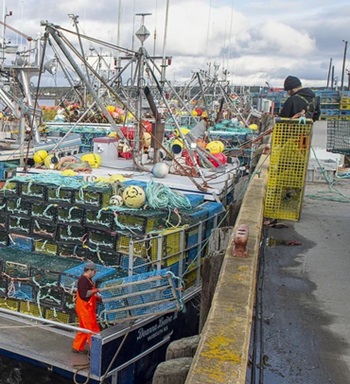 Trump’s inauguration is still a couple of months away, he officially takes office on Jan. 20, but fishermen are trying to take the threat in stride while preparing for the season to open Nov. 25. “People are concerned, but until it happens, we’ll just carry on,” Geoff Irvine, executive director of the Lobster Council of Canada, said. “There’s not a lot we can do to prepare and speculating on what it could mean doesn’t really get us anywhere.” As a result, the stakes are high if U.S. president-elect Donald Trump makes good on his campaign promise to impose duties of between 10 per cent and 20 per cent on all imported goods. While fishermen are worried about how this will play out, he said they have more immediate concerns on their minds. “What’s the catch going to be like?” he said. “What’s the price of lobster going to be like? What’s the weather going to be like? “more, >>CLICK TO READ<< 15:26
Trump’s inauguration is still a couple of months away, he officially takes office on Jan. 20, but fishermen are trying to take the threat in stride while preparing for the season to open Nov. 25. “People are concerned, but until it happens, we’ll just carry on,” Geoff Irvine, executive director of the Lobster Council of Canada, said. “There’s not a lot we can do to prepare and speculating on what it could mean doesn’t really get us anywhere.” As a result, the stakes are high if U.S. president-elect Donald Trump makes good on his campaign promise to impose duties of between 10 per cent and 20 per cent on all imported goods. While fishermen are worried about how this will play out, he said they have more immediate concerns on their minds. “What’s the catch going to be like?” he said. “What’s the price of lobster going to be like? What’s the weather going to be like? “more, >>CLICK TO READ<< 15:26
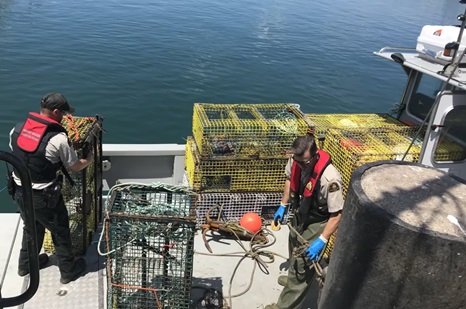
Federal memo estimates more than $176M of Atlantic lobster catch unreported, untaxed
The federal Department of Fisheries and Oceans suspects hundreds of millions of dollars’ worth of lobster is caught in Atlantic Canadian waters each year but never reported to authorities, raising both tax evasion and conservation implications in the country’s largest fishery. An internal memo in August to DFO’s deputy minister said it’s estimated that between 10 and 30 per cent of lobster landings in the region are unreported, and the department said in a statement it is working to map out criminal networks and money laundering in the sector. “It’s mind-boggling,” said Osborne Burke, the president of the Nova Scotia Seafood Alliance, which represents about 150 lobster buyers and processors and has urged a crackdown on unreported cash sales. more, >>CLICK TO READ<< 06:44










